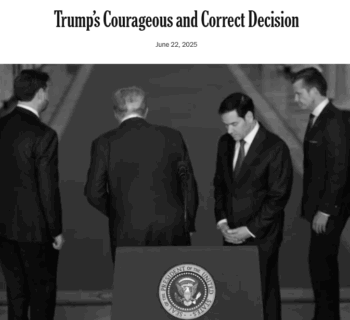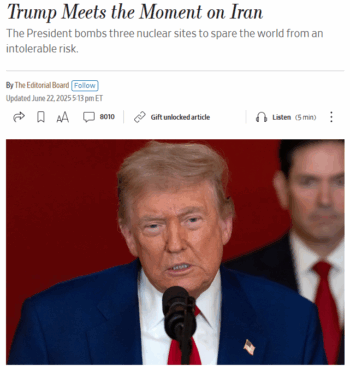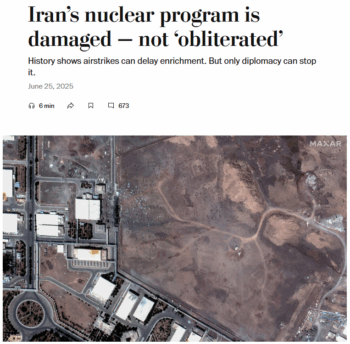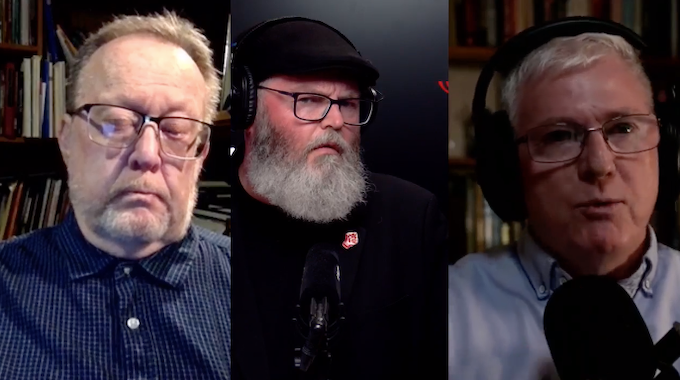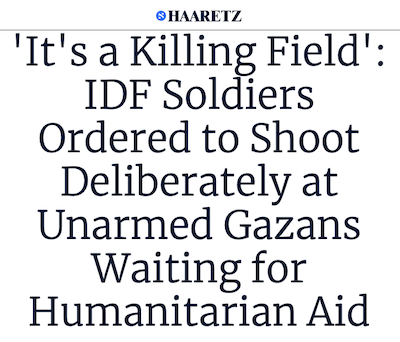Fame is fleeting. We may be a Facebook celebrity today with ‘likes’ in the six digits, only to find as time goes by that the balance is shifting daily as we fade into the oblivion from which we emerged. Pretty much the same phenomenon is discernible in regard to the attention paid historical events. Images blur, and then most slip out of consciousness. It seems especially pronounced these days. Forgetfulness, whether due to a studied attempt to suppress the past or the kicking-in of self-defense instincts on a mass scale, reminds us of George Orwell’s “memory hole’ in 1984. As Orwell understood when he created the “memory hole” concept, the erasure or sublimation of memory makes it easier to shape the present by controlling or editing history. Doing so also serves to preserve a mythic version of a country’s identity. Most broadly, a memory hole is any psychological mechanism for the alteration or disappearance of inconvenient or embarrassing past events. Orwell’s Ministry of Truth made sure that its manipulations were complete and irreversible. What we experience today is something less draconian and directed. Memories do survive, but they usually are vague and distorted. They are prone to be blended into benign fable.
These thoughts about the transitory nature of things arose while perusing a collection of old clippings. Let’s consider some of them.
1. Quemoy & Matsu. For those youthful readers, they are two tiny islands lying just off the coast of China but occupied by the Nationalists ensconced on Taiwan under our protection. In the late 1950s, they were a hot topic. The issue of whether and how to defend them figured prominently in the Kennedy-Nixon debates – right up there with the ‘missile gap’ (paranoid fiction) and Nixon’s 5 o’clock shadow. Pundits concluded that the debates, along with Richard Daley’s creative arithmetic in tabulating the Cook County vote, put JFK in the White House. At the time, there was widespread fear that the dispute could be the flashpoint for war with Beijing issuing 1,500 or so ‘final warnings’ that we had better turn them over to the PRC – or else. Mention the words Quemoy and Matsu these days, and the only response would be a request for the newly opened restaurant’s address.Quemoy & Matsu yesterday; the Spratleys today.
In 1958, the PRC was an enemy. Nowadays, it is a competitor – at worst. However, too many in Washington’s corridors of power ‘need’ an enemy – for strategic, material or emotional reasons. Russia and/or Iran do not suffice. For China’s uniqueness lies in its potential – based on its very success – to challenge Americans’ atavistic article of faith that the United States is destined to serve as the world’s paramount power and leading light. America must beat the Chinese in order to confirm that foundational truth.
2. Crucial breakthroughs in anti-submarine technology – by the Soviets. As the “balance-of-terror” became institutionalized with the appurtenances of MAD, mental space opened for a fresh source of worry. Since the Pentagon & friends cannot tolerate a threat vacuum, anonymous reports started to appear which noted with alarm that the critical pillar of the deterrent triad composed of nuclear submarines carrying MIRVED missiles was in danger of being menaced by the Russkis’ development of diabolically capable attack submarines. The Cassandras claimed that their deployments gave Moscow an incentive to launch a first strike at a time of crisis.
Outcome? Nothing consequential. Sober analysis showed that the risk was inflated, our 20,000+ warhead arsenal was kept intact, and then the USSR disappeared from the strategic map. Now, of course, Putin is taken to be the avatar of Khrushchev, Russia’s hypersonic missiles are reason/excuse to accelerate our own $1 trillion upgrade, and nobody talks about submarine launched ballistic missiles (SLBM) – much less their fanciful vulnerability. Yet, they are the ultimate factor ensuring the credibility of Mutual Assured Destruction.
There is no such thing as “nuclear superiority” between the great powers. The present ‘race’ to develop more refined missile delivery systems (which the Russian are ‘winning’) will not change that basic truth. For 75 years, military planners and analysts have bandied about a variety of ideas for ‘operationalizing’ nuclear weapons.
Fortunately, they never have been activated (TNWs a partial exception). No leader of a nuclear state has placed a hovering finger over the ‘button.’ Sanity ruled their thinking/emotions. That may now have changed given that sanity is no longer a requisite for being commander-in-chief of a nuclear power.
The one state that conceivably could use a nuclear explosive as a weapon of war is rabidly, fanatical Israel.
3. Fulda Gap. For decades, anyone with the slightest claim to expertise about national security and NATO was on intimate terms with the ‘Fulda gap.’ It refers to that portion of the North German plain that represented the shortest route for the Red Army to take on its way to the Channel. The term can have a strategic as well as a territorial definition. For the ‘gap’ also was the dividing line between the bulk of the American forces in Germany who were deployed south of it and the allied forces deployed mainly to the north of it. Hence, double vulnerability. Nightmare visions of 40 Soviet armored divisions pouring through the Fulda gap spawned several innovative ‘solutions.’ They included the deployment of thousands of tactical nuclear weapons (TNWs) in Western European available to staunch an otherwise irresistible Soviet advance overwhelming outnumbered, conventionally armed NATO troops. That was a Kennedy/McNamara initiative. The TNWs were deployed; some are still in place. Fortunately, the notion that this first-use resort to n-weapons could be operationalized without setting off massive strategic exchanges was never tested. Of course, we now know that the Kremlin never contemplated such a suicidal assault – as did a few sane heads back then.Little has been learned, though. These days, the Pentagon and NATO routinely sound the alarm that Putin’s truncated Russia poses a similar threat – despite the loss of all its Warsaw Pact allies and its Eastern European bases, despite NATO’s advance deployments to the Russian borders with Poland, the Baltics, and Finland — despite the inconvenient geographical fact that Russia’s army is 1,000 kilometers farther away from the Fulda gap. That army took three years to gain a decisive advantage over NATO’s Ukrainian auxiliaries. Moreover, there is no conceivable motive for such a crackpot move. For Russians to reach the Fulda Gap these days, they depend on tour coaches. Nobody uses the term ‘Fulda Gap’ in Washington. It’s too awkward for our war planners, but the mentality survives and thrives. History can repeat itself: first as drama, then as farce.
4. Fantasy Provocations. In 1846, many American eyed enviously the Mexican territories North and West of the Rio Grande and Baja. Texans, who were still digesting the large morsel of real estate they had torn from Santa Ana, where among them – out of pure greed, and to gain ‘strategic depth’ I suppose. President James Polk, egged on by other hawkish empire-builders among the country’s political elite, was gung-ho for conquest. He was just looking for an excuse. There being none: he fabricated one. After Texas’ accession to the Union, a crisis was created by the Texans’ demand that the border be moved south from the Nueces River to the Rio Grande (lebensraum). When Mexican President Herrera balked, Polk ordered General (later President) Zachary Taylor to invade the disputed zone. Months later, the Mexicans dared to defend their territory. Polk raged that Mexico had “invaded our territory and shed American blood on American soil” – and sent to Congress an already drafted declaration of war.
Public opinion was divided (among the vocal opponents was Congressman Abraham Lincoln), but the motto Manifest Destiny and the willful Washington government triumphed. We invaded Mexico, defeated them, occupied Mexico City and forced them to hand over the vast territory that ran to the Pacific. Probably the biggest land grab in history. Hence, Hollywood, Santa Fe, and Los Vegas.
Greenland’s Destiny is now Manifest — in the eyes of the American Presidency. So, too, Canada.
In 1898, a vigorous America feeling its oats began flexing its muscles – in Central America, in the Caribbean, in the Pacific Basin. McKinley was President. Expansionists fixed a covetous eye on the residual Spanish possessions of Cuba, Puerto Rico and – farther afield – the Philippine Islands. Spain was a decaying state whose tattered bits of empire scattered around the globe it could not defend. All that the United States needed to take them over was an excuse. As in 1848, they manufactured one. Many of us still “remember the Maine” – the U.S. flagged ship that blew up in Havana Harbor. The U.S. accused the colonial authorities there of deliberately destroying the ship. There was no plausible reason for them to do so – but it wasn’t reason that prevailed. Historians have established beyond a doubt that the Maine was sunk by an explosion that was caused by a spontaneous combustion of grain stored in its hull. No more than there was reason to believe that Saddam Hussein was behind 9/11 or the aluminum tubes were the crucial ingredients of his non-existence nuclear weapons program. The outcome of the Spanish-American War: we got the dubious places we prized. We suppressed a 6-year Philippino resistance to our occupation that left about 400,000 ‘natives’ dead and devastated the country, and 40 years later, we were gone. Teddy Roosevelt rode his fame as leader of the ‘Rough Riders’ into the White House.In Panama, too, they speak Spanish.
In 1958, we embarked on an uncannily similar performance in Indochina. That gruesome story has many chapters, punctuated in the end by humiliation and failure. The most notable repeat element was the artful fabrication of an incident that was exploited as an excuse for war: the infamous Tonkin Gulf encounter. The short version is simple. Senior Washington officials, led by Robert McNamara and McGeorge Bundy, were pressing very hard for a massive escalation of the American military intervention. JFK resisted the pressure and documentary evidence now suggests that he indeed reached the tentative conclusion to begin a withdrawal after the 1964 election. LBJ was also hesitant, but more ambivalent and in a weaker political position. McNamara and Bundy in fact sent Johnson a written ultimatum: either take the measures we are advocating, or we will denounce you as a weakling on national security during the upcoming campaign. It was a proposal that he could not refuse. So, the hunt for an excuse that would sway public opinion and justify a major war in Asia was on. It was found in a naval incident off the coast of North Vietnam. The official story was that an American vessel had been fired on by a Vietnamese gunboat. That was beefed-up as the casus belli for the disproportionate American retaliation which produced millions of casualties (mostly civilian) in all of Vietnam, Laos, Cambodia and among American forces (58,000 killed). The rest is a matter of record.
So, keep a gimlet eye on the Persian Gulf. Then again, recent events tell us that these days we don’t need a contrived excuse to attack a sovereign country on the other side of the world that poses no threat to the United States.
6. 50 METRICS
In November-December 2009, President Obama found himself in a dilemma. It was the failure of the American project to foster a friendly, democratic Afghanistan. The enormous investment of military forces, cash and political advice had not paid the expected dividends. The Kabul government was incompetent, corrupt and riddled by warlord rivalry. The Taliban insurgency, spurred back to life by the ham-handed occupation, was thriving. The counter-insurgency was stymied in a stalemate. Obama’s instincts pointed him towards a lowering of the United States’ profile in acceptance that our goals were unreachable. However, no one in the administration’s national security team shared this sentiment – except for Vice-President Biden.
Under the guidance of Secretary of Defense Robert Gates, the resisters formed a cabal to prevent Obama from acting on his instincts. It included Chairman of the Joint Chiefs Mike Mullin, CIA Director David Petraeus, our newly appointed commander in Afghanistan Stanley McCrystal and Secretary of State Hillary Clinton. She was selected to act as the ‘frontman’ for political reasons that included her personal standing with the President. They pressed hard for a different strategy that entailed an expansion of the residual reduced force in country by some 35,000 and a doubling down on our commitment to pre-existing objectives. Obama set aside his misgivings and yielded to the pressure. To cover himself, he took three exceptional steps. One, he lowered the size of the escalation. Two, he composed an elaborate, quasi-legal document that spelled out the terms and conditions of the strategy. It stipulated the sequence of actions and set deadlines. All of the main protagonists were obliged to sign what was a strange sort of pre-nuptial contract. Finally, Obama included 50 metrics by which to measure progress/success in the strategy’s implementation. That was done in order to avoid the fudging of future assessments and serve as benchmarks for later decisions. The punditry and the media made much of the 50 metrics which were broadly viewed as a sign of the President’s diligence and rigorous, lawyerly mind. That lasted for about 10 days. The metrics never again were to be mentioned in any public setting – or, as far as we know – in any private setting either.
11 years and 3 administrations later, the war went on. Trump talked about a withdrawal – sort of. We didn’t leave. Desultory ‘peace’ talks between the Taliban and the debile Kabul government (complicated by the intrusion of ISIS fighters) meandered. So, were back to Richard Holbrooke’s definition of success: “We’ll know it when we see it.” For the Pentagon, ‘success’ was primarily a matter of ensuring that history doesn’t place an ‘L’ in the U.S. military’s record book. In the last weeks of his first administration, Trump conceded defeat. The chaotic withdrawal, totally mismanaged by the Pentagon, took pace under Biden. He was blamed.
Digits and statistics and equations and algorithms are the last (or first) refuge of somebody either trying to pull the wool over your eyes – or really not knowing the subject he is talking about.
The ignominious flight from the 19-year Afghan debacle put paid to the COIN/Nation Building/Democracy Promotion phase of the post-Cold War strategy for maximizing American global influence. It had been a three-pronged project now reduced to what always had been the two main elements: coercive force, and covert operations. The ‘best-of-intentions’ cover that the former provided continued to serve as propaganda tool for cudgeling hostile states on human rights grounds. However, the ranks of the true believers were reduced to a few naïve idealists.
Outright coercion has been employed with growing audacity: Syria, Libya, Iraq, Palestine, Lebanon (where it succeeded) as well as Afghanistan, Iran, Yemen (where it failed). Covert operations are employed with the same audacity spanning the globe – producing similar mixed results: Ukraine, Honduras, Bolivia, Peru, Pakistan (successful); Venezuela, Georgia, Belarus, Serbia, Kazakhstan, Mali (where it failed). This propensity for trying to dictate the political leadership of other countries now has reached its logical extremity in the outright voiding of election results that displease Washington: Romania being the outstanding example. This last is not as incongruent as it might seem; after all, this is what 50% of Americans, a majority of the ruling party, and a slice of the federal judiciary approve of/countenance when it comes to the violent insurrection of January 6.
7. The JCPOA Deal With Iran. Within hours of signing the historic, laboriously constructed agreement, President Obama said:
With respect to Iran, it is a great civilization, but it also has an authoritarian theocracy in charge that is anti-American, anti-Israeli, anti-Semitic, sponsors terrorism, and there are a whole host of real profound differences that we [have with them].
Later:
Questions have been raised about whether we have sufficient options for dealing with Iranian violations of the deal. In fact, we have a wide range of unilateral and multilateral responses that we can employ should Iran fail to meet its commitments. First and foremost, as you are aware, the snap back provision we secured in the UN Security Council is unprecedented. If at any time the United States believes Iran has failed to meet its commitments, no other state can block our ability to snap back those multilateral sanctions. Second, we and our European partners can snap our own sanctions back into place at any time should Iran fail to meet its commitments. This gives us, as well as our European partners, enormous leverage in holding Iran to its commitments under the JCPOA. Third, we also enjoy a range of other, more incremental options. These include re-imposing certain US. sanctions, and working with our European partners to do the same, as we have done in the past. Fourth, we can employ our leverage in the mechanisms agreed to with our negotiating partners, such as through the Joint Commission’s role in the procurement channel established in the JCPOA this is a mechanism Iran must use under the deal for the procurement of any materials designed for a peaceful nuclear program and in which we have the ability to block approval. Ultimately, it is essential that we retain the flexibility to decide what responsive measures we and our allies deem appropriate for any non-compliance. Telegraphing in advance to Iran the expected any potential infractions would be counterproductive, potentially lessening the deterrent effect.
— Letter to Representative Nadler
Obama was echoed by Secretary of State John Kerry:
Through these steps and others, we will maintain international pressure on Iran. United States sanctions imposed because of Tehran’s support for terrorism and its human rights record – those will remain in place, as will our sanctions aimed at preventing the proliferation of ballistic missiles and transfer of conventional arms. The UN Security Council prohibitions on shipping weapons to Hizballah, the Shiite militias in Iraq, the Houthi rebels in Yemen – all of those will remain as well….
Have no doubt. The United States will oppose Iran’s destabilizing policies with every national security tool available. And disregard the myth. The Iran agreement is based on proof, not trust. And in a letter that I am sending to all the members of Congress today, I make clear the Administration’s willingness to work with them on legislation to address shared concerns about regional security consistent with the agreement that we have worked out with our international partners.
Reply: “Ayatollah Ali Khamenei, the Supreme Leader of Iran, [said] Washington sought Iran’s “surrender”. “The [arrogant] Americans say they stopped Iran from acquiring a nuclear weapon,” Khamenei said. “They know it’s not true. We had a fatwa (religious ruling), declaring nuclear weapons to be religiously forbidden under Islamic law. It had nothing to do with the nuclear talks.”
Neither Obama nor Trump complied with the JCPOA’s provisions calling for the lifting of economic sanctions including release of Iranian financial assets frozen in American banks. Iran did comply with its treaty commitments vis the IAEA (which predictably passed on the information to American Intelligence and military planners — a practice that continued to last week). This pattern is reminiscent of Bill Clinton’s reneging on the deal with North Korea in the 1990s.
This depiction of Iran has had two profound effects. First, it closed off the possibility of pursuing a wider détente with Iran that could permit diplomatic resolution of outstanding regional conflicts. Second, this characterization was grist for the mill for all those opposed to any normalization of relations between Washington and Tehran. Thereby, it created political circumstances that encouraged Trump’s withdrawal from the treaty and then led President Biden to take a hardline approach to a restoration of our participation. By insisting on the same, unacceptable preconditions that his predecessor demanded, Biden in effect followed the course laid down by Trump – as enabled by Obama.
Now we suffer the inevitable denouement.
Why Memory?
Each of these episodes in collective forgetfulness has its singular features, as do the lessons to be drawn from them. If we were to indulge ourselves in generalization, they could be summarized this way:
1. The erasure or blurring of past events is common and easily accomplished.
2. Doing so often is a matter of political convenience.
3. The lessons we draw from them are normally self-serving, selective and partial.
4. Retrieving with accuracy memories of those past events is technically quite simple; psychologically, it takes great willpower
The failure of collective memory can exact a very heavy penalty.
This post was originally published on Dissident Voice.



